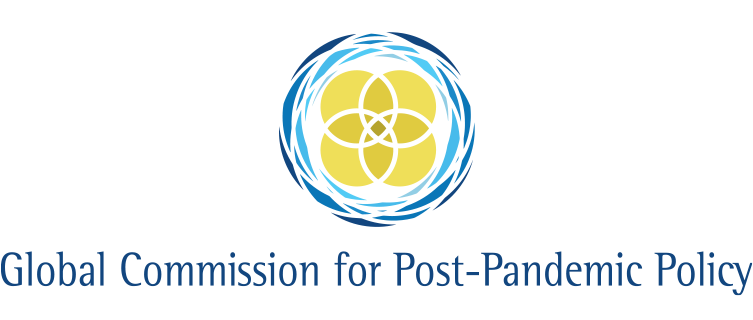Research Monitor
March 1st 2021
Health
New York City COVID-19 variant
A new study published on the medRxiv—a pre-print server for research in the health sciences—reports the discovery of a novel strain of SARS-CoV-2 in New York City.
The variants of SARS-CoV-2 that developed independently in the United Kingdom, South Africa and Brazil present a challenge to the global effort to contain the COVID-19 pandemic. Of particular concern is a spike-protein mutation known as E484K—characteristic of the South African and Brazilian strains—which is thought to be responsible for the development of vaccine resistance in those virus variants. To investigate to what extent E484K is circulating in New York City, a team of researchers from Columbia University led by Medini Annavajhala developed a special PCR test designed to detect the presence of E484K.
Between November 1st (2020) and February 15th (2021), the team performed tests on 60,539 people in New York City with 4,358 COVID-19 positive test results. Their results almost precisely tracked the emergence of a new strain. In early-November, not a single sample with E484K was detected. However, by late-November 1.3% of all samples tested positive for E484K. By mid-January, that number was 5.3%—rising to 12.3% between February 8th and 15th. The vast majority of those cases came from a single lineage—neither the South African nor Brazilian strains—but a local New York City strain called B.1.526.
These findings are backed up by a separate study published on the bioRxiv (a pre-print server for biology) which independently found that for February as a whole the same virus strain accounted for approximately 25% of all New York City COVID-19 cases.
Few African authors in COVID-19 research
A new paper published in the prestigious British Medical Journal investigates the representation of African scientists in COVID-19 research and publication.
There is an existing body of literature demonstrating that African scientists are underrepresented in the medical literature related to the burden of disease on the continent. Despite hosting 17% of the world’s population, the continent’s universities produce less than 1% of global health research each year—largely due to resource constraints. In the COVID-19 pandemic, however, the international media and scientific community has consistently reported grave concerns about the capacity of fragile and overburdened healthcare systems in developing-world settings, such as those in Africa.
To investigate whether these concerns have translated into greater representation of African scientists in COVID-19 publications or greater research into COVID-19 in African contexts, Antoinette Naidoo, Peter Hodkinson, Lauren King and Lee Wallis from the University of Cape Town performed a meta-analysis of COVID-19 research published in the top ten medical journals over the past year. Their findings were not encouraging. Of all COVID-19 research analysed, only 3.9% relates in some way to the African continent. Of these papers, one in five COVID-19 had no African authors, with two-thirds of authors on COVID-19 papers on Africa not from the continent. The omission was most apparent in opinion-based articles published in the journals providing advice on systems response and clinical care on the continent.
As a consequence, Naidoo, Hodkinson, King and Wallis recommend that journals adopt explicit inclusivity policies for content related to developing-world settings to accelerate progress towards better representation for local populations in medical research that affects them directly.
Economics
A new paper published in National Bureau of Economic Research (NBER) Working Paper Series looks at the gendered impact of the COVID-19 global recession.
In the United States, recessions are traditionally associated with greater drops in employment for men than for women. This is partly explained by gender differences in the distribution of occupations, with men primarily employed in production occupations and women primarily employed in service occupations. The recession precipitated by the COVID-19 pandemic has turned these relationships on their heads, however. In this recession, it is demand in the service sector that dramatically dropped in response to government efforts and personal choices to mitigate the spread of COVID-19. As a consequence, women have borne a disproportionate burden of COVID-19-related job losses.
To investigate and quantify these changes, Stefania Albanesi from the University of Pittsburgh and Jiyeon Kim from the Korea Development Institute examined real time data on employment, labour force participation and gross job flows in the United States. Their results show that through the Spring and Summer of 2020, women accounted for approximately 63% of total job losses, dropping to approximately 59% in the Autumn. In a surprising result, however, controlling for the gendered occupational distribution did not markedly change this result—suggesting some other factor is at work.
With a deeper analysis, Albanesi and Kim fingered the cause. Traditionally, married women have tended to engage more in the labour force in recessions as a form of household insurance against the negative impacts of a downturn. However, in the COVID-19 recession the family demands of the cancelling of in-person teaching has pressured many mothers (both married and single) into leaving the labour force. It is this factor—rather than the gendered occupation distribution—that is the single largest determinant of the disproportionate employment losses amongst women.
Politics
A new paper published in the Centre for Economic Policy and Research (CEPR) publication COVID Economics analyses partisan differences in COVID-19 infection rates among politicians to estimate the impact of risk-avoidant behavioural changes on COVID-19 infection rates.
The task of quantifying the impact of risk-avoidant behaviours (wearing a mask, social-distancing, etc.) on COVID-19 infection rates is difficult. The reason being that there are often so many confounding factors (different occupational risks, different demographic risks) that disentangling the specific impact of behavioural changes is almost impossible.
To overcome this, Patrick Carlin, Sumedha Gupta, Daniel Sacks and Coady Wing from Indiana University took advantage of the gaping partisan difference in attitudes toward the COVID-19 pandemic between Democratic and Republican politicians in the United States. The researchers analysed the prevalence of COVID-19 infections among state governors and members of the United States Congress—politicians who face similar occupational risks, come from similar demographic backgrounds and are frequently tested—to investigate whether there was any marked difference in infection rates between the two.
Their results were striking. Over the course of the pandemic, Republican politicians have been three times as likely as Democrats to have reported a COVID-19 case. This link between COVID-19 and party affiliation is not due to demographic differences, differences in state riskiness, or differential campaign strategies—all of which were controlled for.
This study supports the view held by most public health experts that behavioural risk is a key determinant in COVID-19 infection.
GCPPP Newsletter
We now publish a weekly newsletter to inform friends and supporters of the Global Commission’s progress and to provide updates when new content is published. Please sign up here:








